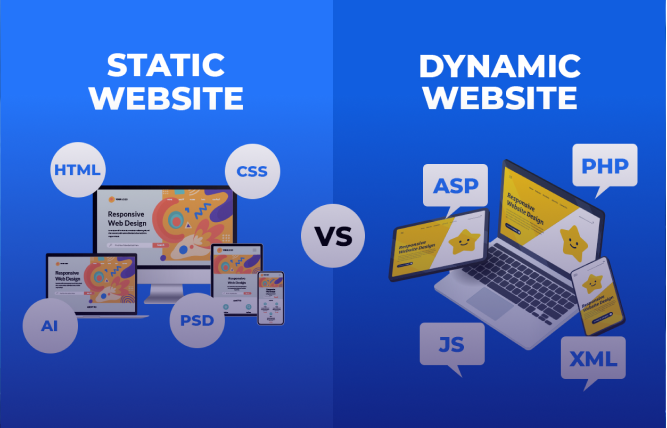Introduction
Building a real estate website takes account of a host of steps, like planning, selecting a domain and hosting, and designing. It also includes adding important features, such as property listings. This is where this guide comes to assist you as it answers the “how to build a real estate website” question in a brilliant manner.
Creating a reliable online presence is vital for real estate professionals. A properly crafted website will serve as a powerful utility to showcase properties, attract potential clients, and offer valuable information.
This is where this guide will come to your aid as it will inform you how to build a real estate website covering all the important elements, such as initial planning and ongoing maintenance. You can be a real estate developer, broker or an agent. This guide will allow you to create an effective and professional website that meets your needs.
This blog is also a must-read for those who seek information on how to build a real estate website for free. Additionally, if you feel confused about any point here, then contact FuturByte. We are a reputed real estate software development company that fully understands real estate website requirements.
Important Benefits of a Real Estate Website
| Benefit | Description |
Better visibility | Reaching a wider audience and attracting more possible clients online |
24/7 availability | Display properties and offer information |
Lead generation | Get and nurture leads via CTAs and contact forms |
Professional branding | Create and improve your professional image and credibility |
Easy updates | Easily perform regular updating of property listings and content |
Market insights | Offer valuable market data and neighbourhood information |
Improved user experience | Present advanced search functionality and interactive maps |
Cost-effective marketing | Decrease marketing costs compared to traditional methods |
Step 1: Real Estate Website Planning
Defining Goals
Defining clear goals for your website is paramount. Clarifying your goals here will guide the function and design of your website. Identifying your target audience, whether it is investors, sellers or homebuyers, will also assist in tailoring your website’s features and content.
Have trouble defining your goals? Contact FuturByte. We are a custom web development company that can offer you immense aid here.
Market Research
Performing in-depth market research is essential when you are answering the “how to build a real estate website” question. Go through competitor websites to grasp what is currently working and what is not. Seek unique selling points that will set your site apart.
Step 2: Selecting a Domain and Hosting
Domain Name
The domain name is your website’s internet address, so select it wisely. It should be easy to spell, memorable, and reflective of your brand.
Hosting Provider
Going for the right hosting provider is very important in how to build a real estate website. Go with providers that offer excellent customer support, fast loading speeds, and reliable uptime.
Step 3: Website Designing
Choosing a CMS or Website Builder
Going for the right platform is an important step in how to build a real estate website. Today’s renowned content management systems CMS and real estate website builder include WordPress and Squarespace.
Do you want to choose the right website builder but don’t know which one to go with? Contact FuturByte. We are a famed finance management software maker that will take note of your requirements and offer the best possible advice.
Selecting a Template or Theme
It is crucial for a real estate website to have a professional and responsive theme when looking to answer the “how to create real estate website” query. Make sure that this theme is mobile-friendly.
Design Customisation
Designing a user-friendly website is crucial in how to build a real estate website. Go with a neat layout with intuitive navigation for enhanced user experience. Feature your branding elements, such as colour schemes and logos.
Need assistance with design customisation? Call FuturByte. We are a renowned learning management software company having immense expertise in design customisation.
Step 4: Key Features and Functionalities
Property Listings
Property listings are at the core of any real estate website. Every listing should have essential details such as pricing, comprehensive descriptions, and contact information. Add a Multiple Listing Service (MLS) feed to automatically update and display the newest listings.
Search Functionality
It is a must for a real estate website to have an advanced search functionality. This point should especially be noted by those who have yet to properly answer the “how to build a real estate website” question. Implement filters that let users search by property type, price range, location, and other criteria.
Want beneficial advice regarding the search feature and how it can benefit you? Contact FuturByte. We are an on demand software development company that will give you great advice on the matter.
Contact Forms and Lead Capture
Effective contact forms are directly related to lead generation. This is why you should design forms that are easy to fill out and strategically placed on your website. Make use of compelling and clear call-to-actions (CTAs) to propel visitors to inquire about properties.
Capturing leads through the forms is a vital aspect of how to build a real estate website.
Interactive Maps
The presence of interactive maps, like Google Maps, will prominently improve the user experience. These maps will assist visitors in visualising the property locations and nearby amenities.
Step 5: Content and SEO
Making Engaging Content
Creating engaging content is vital in how to build a real estate website. Publish market updates, neighbourhood guides, and blog posts regularly. This will allow you to offer value to your visitors.
Want to know how to make engaging content? Call FuturByte. We are a globally-recognised retail software development company that will offer you excellent advice on the matter.
Search Engine Optimisation (SEO)
SEO done right will drive traffic to your website when you seek to answer the “how to create real estate website” query. This is why you should apply on-page SEO best practices, such as using relevant keywords and optimising meta tags. Off-page SEO strategies such as having a strong social media presence and building backlinks are also important.
Step 6: Applying User Experience (UX) Best Practices
Mobile Optimisation
It is crucial for you to ensure that your website is mobile-friendly. This is because a significant portion (possibly the majority) of your audience will access your site via tablets and smartphones. Test your website on different devices to check if it is offering a seamless experience on different platforms.
Quick Loading Speeds
The site’s speed is an essential factor in how to build a real estate website. Optimise your real estate website’s performance by compressing images, using a content delivery network, and leveraging browser caching. Remember – slow loading times can drive visitors away.
Accessibility Considerations
Ensure that all users have access to your website. For this purpose, accessibility standards such as the Web Content Accessibility Guidelines (WCAG) must be followed. Features such as readable fonts, keyboard navigation, and alt text for images can improve accessibility.
Step 7: Integrating Plugins and Additional Tools
CRM Integration
Customer Relationship Management (CRM) tools are important for client interactions and leads management. Famed options such as HubSpot and Salesforce can assist you in tracking leads and improving the CRM.
Analytics and Tracking
Set up analytics tools for monitoring your website’s performance. Here, Google Analytics is a reliable and reputed tool that offers you insights into traffic sources, user behaviour, and more.
Are you looking to use analytics and tracking to create something like an automobile workshop management software? Call FuturByte. We can help you immensely here.
Social Media Integration
Social media integration with your website will improve your online presence. You can include social sharing buttons in your content. This will encourage visitors to share blog posts and listings.
Step 8: The Testing and Launching Phase
Pre-Launch Checklist
Make sure that all features are correctly working before launching. Try to test all aspects of your site. Proofread content and check links to deal with errors.
Beta Testing
Perform beta testing with a limited user group. This will allow you to gain valuable feedback. The insights that you get here will allow you to make necessary improvements and adjustments.
Official Launch
Use a host of channels to promote your website launch, such as industry networks, email newsletters, and social media. Monitor initial performance and attain user feedback to perform possible final adjustments.
Step 9: Maintenance and Updating
Regular Content Updates
Keep your content up-to-date and fresh. This is directly related to user interest. Regularly provide market updates, publish new blog posts, and update property listings.
Website Maintenance
Conduct regular maintenance duties, like updating software and plugins and backing up your website.
Monitoring and Improving
You need to continuously monitor your website’s performance using analytics tools. Analyse site metrics to identify areas for improvement.
Concluding Remarks
This guide has explained in quite detail how to build a real estate website. Remember that this process can be an immensely rewarding activity that can prominently enhance a real estate’s business opportunities and online presence.
So make sure that you follow the above steps in the best of manners, as this will allow you to create a functional and professional website that exactly fits your needs.
Finally, if you want to build the best possible real estate website for yourself, then call FuturByte. They are a famed mobile app development company that will give you the best possible website.
Frequently Asked Questions
Defining clear goals will assist in tailoring the website’s functionality and design to meet particular needs. This includes providing market insights and listing properties.
Some of the most essential features include detailed descriptions, property listings with high-resolution images, contact forms for lead capture, advanced search functionality, and interactive maps.
SEO can greatly improve a website’s visibility on search engines, driving organic traffic. Applying on-page SEO practices, such as using relevant keywords and optimising meta tags, along with off-page strategies like building backlinks, can increase search engine rankings.
If a real estate website is optimised for mobile devices, then this will ensure that the website performs smoothly on handheld devices such as smartphones or tablets. This will offer a seamless user experience.
Have questions or feedback?
Get in touch with us and we‘l get back to you and help as soon as we can!




